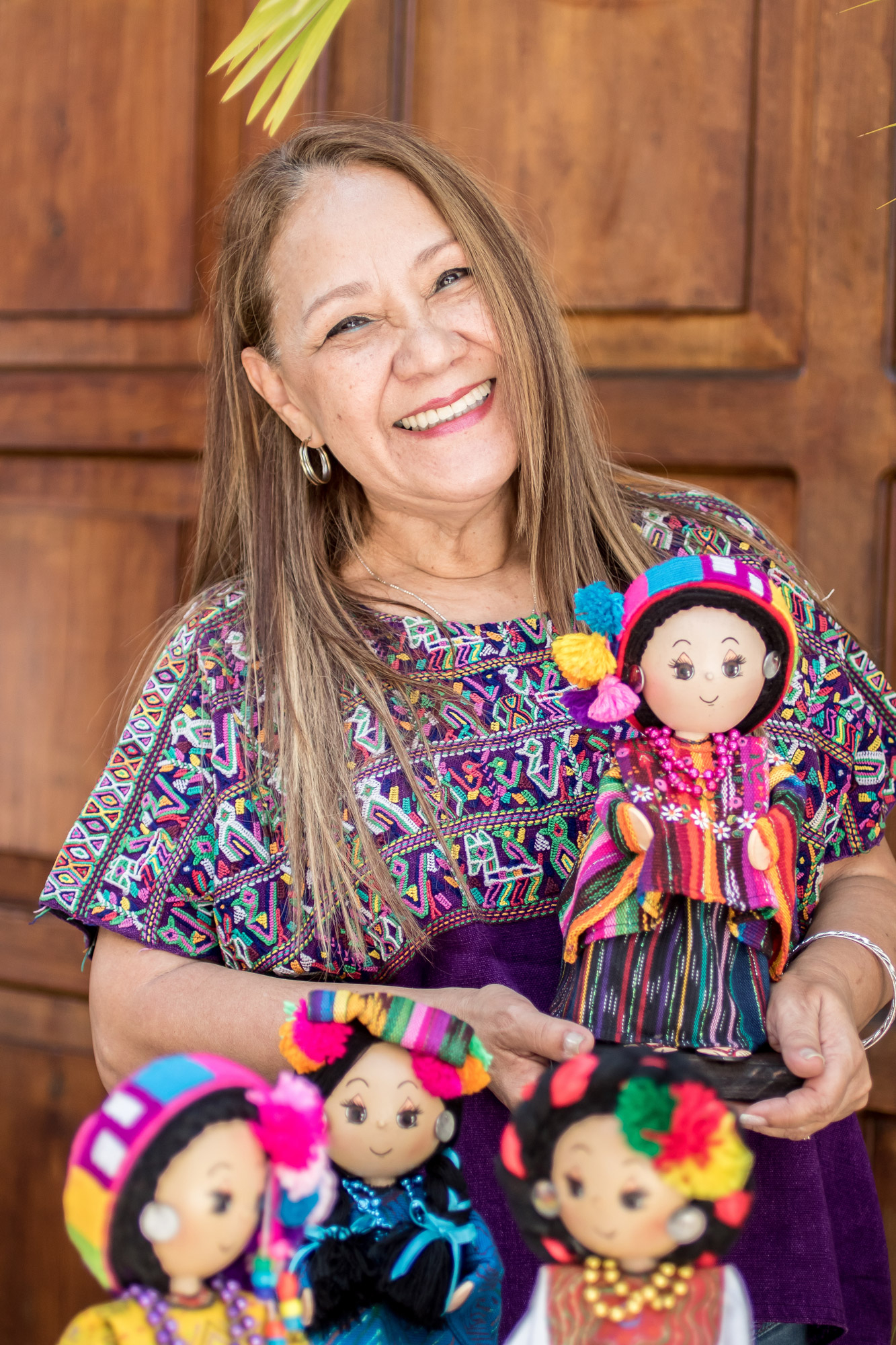Artisan Organization: Iliana Hernandez
Country: Central America
"I was born in Guatemala City in 1959, and grew up with my four older brothers and sisters. My father passed away when I was five, so my mother raised us by herself. She is a seamstress and that's how she made a living for us. Many nights I watched her stay up late, sewing. But in this way, we were able to go to school, grow up to be good people and buy a house, where my mother still lives.
"My youngest brother, César, was always creative. He worked in clay, painted, drew cartoons and read a lot. Little by little, I became interested, too, and he taught me to paint in acrylics. One of my daughters also likes art so, after he retired, they'd experiment together. And their designs came out very well.
"Once I came home from work to find the whole house filled with plaster. My daughter and brother had their face and clothing covered in it, and they were crafting a doll they dressed in cotton dipped in plaster.
"Some time later, I found a magazine that showed how to craft something similar but not so complicated. At least it wouldn't make such a mess. I showed it to my brother and he, my daughter and I started making prototypes. We made such a pretty doll! Then we decided to paint them in our traditional clothing. We took the doll to the central market to show the shopkeepers. The first one who saw our doll loved it. She gave us our first order. It was a little scary because we didn't know if we'd be able to do it, but we were exited, too. We crafted the dolls and delivered them on time.
"That was in 1995, and we've been working ever since. We've been passionate about our dolls from the beginning, and they make us very happy. There's nothing better than working with love.
"My brother thought it would be good to help others with our work, so we began teaching people to paint. The house was filled with people; it was very festive. Today, we're still working with many of those women. They work in their own homes, then bring us the painted fabrics and we craft the dolls. We've been able to organize things so we can all work from home. My mother fashions the frames for the dolls, does the backgrounds for the fabric and does the finishing. My daughter and I do the research, coordinate with the artists, paint, supervise the quality, and help my mother assemble the dolls and give them the final touches. When they're finished, I sell them.
"Having worked with the dolls for a while, I pursued my interest in all things Maya, especially their calendar and the nahuales, which are the animals that energize the calendar and accompany each person through their life’s journey. Inspired by the colors that Maya people use today, and by their ancestral beliefs, I started designing jewelry that honors this great gift that the ancient Mayas gave to humanity.
"I share this jewelry work with the people that also craft the dolls – for all of us it means yet another way of expressing the artist within us. It also means another source of income, and the possibility of sharing the legendary art and beliefs of the Maya people.
"The women work from home, and we put them together and add the finishing touches. At home we all chip in, including mom.
"What I like best about my work is that I can do it with my family around me and I can take care of my little boy. It is so satisfying to share what I've learned with other women so they can get ahead with their own children. My dream is to help more people with the work I can give them, to see my family grow, and also to grow this project my brother started.
"My life is filled with activities. I really enjoy sharing my time with my family. It's wonderful to see my children and the other women's children growing up. I also like to go out to eat and sightsee, and take my family to places close to nature. And I'm very happy to know that my mother – at 84 – still has so much life in her, and that she enjoys working with me and feeling needed.
"It's inspiring to see a finished doll, and to be able to help others and show the world such an important aspect of our country. Each piece that we craft is intimately related with Guatemala's history. Some of our designs can take hours to paint. With each doll, we try to reproduce the native apparel of our communities which, in many cases, is no longer worn. The apparel varies from region to region as well as the occasions on which it is worn. Despite the individual differences, each weaving and embroidery pattern carries a message.
"They reveal the Maya vision of the cosmos where every element and detail has a meaning. That applies to the Maya calendar and the nahual glyphs, where every line and every detail is closely associated with Mother Nature.
"Through our work, I hope you are better able to know our rich culture and color. We hope you'd like to visit and experience the beauty and warmth of Guatemala. Please know that when you choose our designs, there are many people who are grateful for your support.""




























